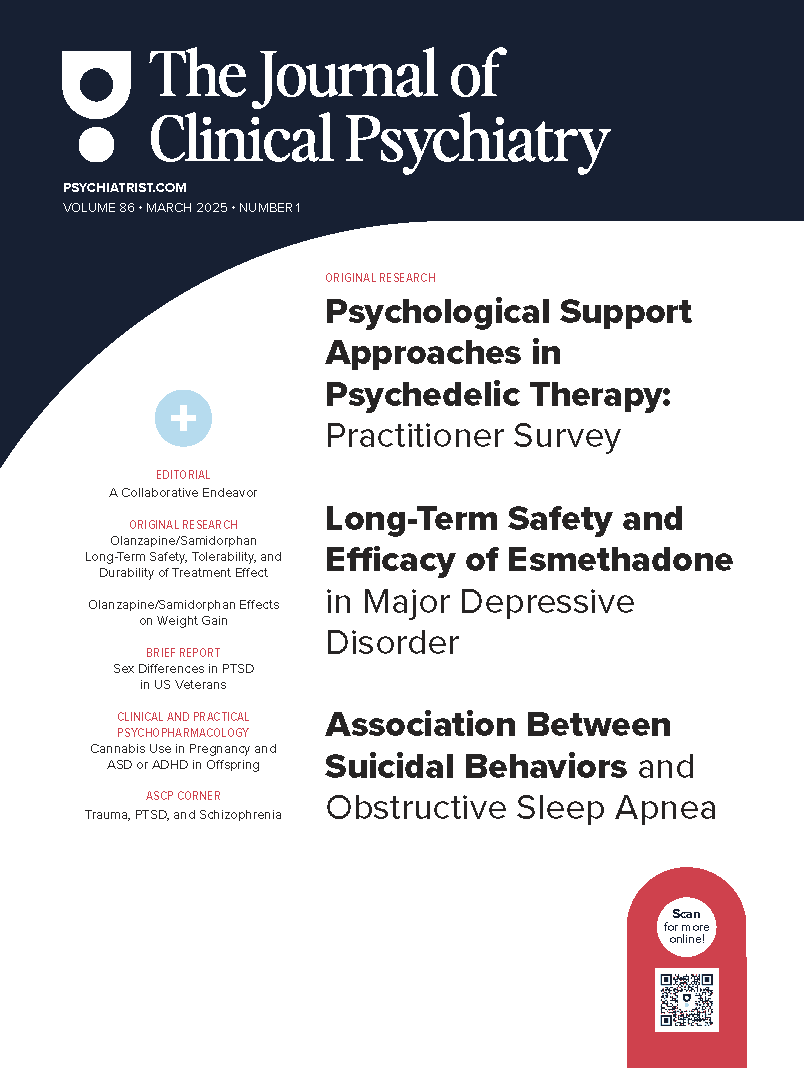Objective: The goal of this 10-year naturalistic study was to examine, in clozapine-treated patients, the change in cardiovascular risk factors following clozapine initiation and the mortality estimates from cardiovascular disease.
Method: Data were collected from medical records from January 1992 to December 2003 and included age, gender, race, diagnosis, family history of diabetes, and age at clozapine initiation for clozapine-treated patients with schizophrenia or schizoaffective disorder (DSM-IV criteria). Clozapine dosage and laboratory results were recorded at 12-month intervals.
Results: At the time of clozapine initiation, the mean ± SD age of the 96 patients studied was 36.5 ± 7.9 years; 28% (N = 27) were women. The Kaplan-Meier estimate for 10-year mortality from cardiovascular disease was 9%. African American and Hispanic American patients exhibited elevated risk of cardiovascular disease-related mortality (odds ratio [OR] = 7.2, p = .09; OR = 11.3, p = .04, respectively) compared to white patients. Body mass index (BMI) significantly increased the odds ratio of mortality (OR = 1.2, p < .01). The Kaplan-Meier estimate for new-onset diabetes mellitus was approximately 43%, and Hispanic American (OR = 4.3, p = .027) and African American (OR = 11.5, p = .0001) patients showed elevated risks of developing diabetes mellitus compared to white patients. Additionally, BMI (OR = 1.11, p = .0006), total cholesterol level (OR = 1.006, p = .04), and serum triglyceride level (OR = 1.002, p = .04) modestly increased the odds ratio for the development of diabetes mellitus.
Conclusions: These results support the hypothesis that clozapine-treated patients appear to be at risk for death from cardiovascular disease secondary to clozapine-associated medical disorders such as obesity, diabetes, hypertension, and hyperlipidemia.’ ‹
Continue Reading...
Members enjoy unlimited free PDF downloads as part of their subscription! Subscribe today for instant access to this article and our entire library in your preferred format. Alternatively, you can purchase the PDF of this article individually.
Please sign in or purchase this PDF for $40.00.
Already a member? Login




